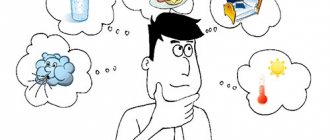Personal motives in psychology are a certain internal force of a person that motivates him to action, which is important for achieving the goal that the individual has determined for himself. In the scientific world, the definition of personal motives is very diverse. Some researchers believe that these are ideas, as well as a representation of a person, others call them the motives of a person’s thoughts and attitudes, which he adheres to, guided by them in life. Many people often know the feeling of wanting to move mountains and satisfy their need. This feeling and experience gives the individual strength, as well as self-confidence, which encourages the person to form and grow as a personality. Strictly speaking, this experience is the motive of the individual.
Personality motive is a very important attribute in the life of an individual. It is the motives that determine what heights a person will reach. In career growth, employees' aspirations acquire special properties, so management often tries to create external motives. External motives include salary increases or bonuses, sometimes it’s just praise, etc. These things motivate a person to show interest and exert more effort in order to receive external rewards and perform better as a result.
But it is worth noting that internal motives are much stronger than external ones. If an individual, so to speak, is fired up from within with a certain goal and certainly wants to achieve it, then he can overcome all obstacles, since he does it for himself.
What are personal motives?
It is difficult to say exactly what a motive is, since a person is driven by many forces. The motive could be:
- Goal or desire - what does a person want to achieve?
- Beliefs and attitudes are ready-made stereotypes that make a person ready for a certain action or behavior.
- Fears and complexes are when a person tries to run away from something and spares no effort.
- Interests and attractions – when a person shows interest in something and wants to try it.
- Ideas - when a person does not yet know what this will lead to, but he sees in this some sense of satisfying his desires.
- Needs are internal or instinctive desires that will bother a person until they are satisfied.
The motive of a person is a certain internal force, which he feels as a surge of energy that encourages him to take a certain action and achieve a specific result. A person does not feel tired or lazy. He's ready to act.
Motives can be controlled. Of course, some motives are basic and fundamental, aimed at preserving human life, so even they cannot be completely eliminated. They can only be delayed. However, there are social motives - developed in the process of life. If you realize them, you can easily change or adjust them.
Why don't your desires always give you the energy you need to achieve them? The answer here is quite simple: external motives, which are formed by a person consciously and even under the influence of society, are much weaker than the internal motives that are given to a person at the physiological level or in the process of life and have gone into the subconscious. If a person, trying to achieve a goal, contradicts his internal motives with his external motives, then he will stop achieving his desire, since internal motives will stop him and act stronger than external ones.
Behavioral motives in human life
At different time intervals in a person’s life, different motives influence his behavior. That is, some are actualized, others become potential and vice versa. Example: let’s say that in elementary school a child learns under the influence of negative motivation (punishment), with age the motivation changes - the young person becomes interested in acquiring new knowledge, and the motivation for self-development is activated. But still, the basic set of motives, which are laid down in childhood and develop in adolescence, remains for life. Therefore, it is difficult to overestimate the role of parents, teachers, mentors in the process of formation of the human personality.
Human activity usually depends on several motives. And the more actualized motives, the higher a person’s motivation to achieve results. Example: two physically equally prepared athletes, one goal (winning a prize). The first is motivated by achieving a goal and receiving material benefits (prize fund). The motivation of the second - in addition to the two described motives, there is also responsibility to the team, self-affirmation, the desire to be like the champion idol. In a specific case, this is an almost 100% victory for the second athlete. Conclusion: by using additional motives, you can increase the overall level of motivation.
So, general patterns of increasing motivation:
- – multiplication of the number of motives inducing activity;
- – creation of actualizing factors for a specific situation;
- – increasing the motivating power of each motive.
The above patterns take place both in situations where a manager works with subordinates, a coach works with athletes, a teacher works with students, and in situations of self-regulation. A person can independently and consciously increase his motivation to achieve a certain goal. Having learned to manipulate motivational factors, absolutely every person will be able to achieve enormous success in any type of activity.
Did you find apk for android? You can find new Free Android Games and apps.
More from my site
- Second selection of videos from a lecture on health in Syktyvkar
- How to hide from depression
- Secrets of women's nutrition at different ages
- How to maintain a relationship with your husband after the birth of a child
- An important risk factor for developing cancer has been identified
- What things bring chaos into our lives?
Post Views: 6,066
Motives of personality behavior
At all times, people have tried to answer the question “Why does a person act in one way or another?” Even a modern person always tries to understand the motives of another individual when his behavior is disturbing and does not agree with personal interests and desires.
Motives underlie any individual behavior. They often occur in combination. Among them there are leading and secondary motives. Leading motives will tell how a person should act, and secondary motives will make adjustments to behavior, modifying it slightly.
To understand the actions of another person and even influence them, you need to understand what motivates the individual and change his motives, making them leading. This is exactly what psychology does.
The problem of the struggle of motives
As already mentioned, a person is simultaneously controlled by several motives, often prompting him to different actions. For example, a classic situation. It’s early morning, the alarm clock rings, which you set specifically to get up early and go for a morning run. But that was yesterday, and now I really don’t want to get out from under the warm blanket when I can sleep for another half hour. What will you choose, which motive will win? This depends on many factors, including the importance of motives, willpower, common sense and additional incentives. For example, if you agreed to run with a friend, and he will wait for you.
In the example given, the situation is not so critical, but it happens that a person is faced with a very difficult choice: to save himself or to save other people, to commit a crime and achieve a goal, or not to commit and give up what he wants. The struggle of motives can become a source of very complex and severe internal conflict, leading to the development of neurosis or depression.
Psychologists in a situation of conflict of motives advise relying on the rational sphere, that is, not giving in to emotions, thinking over the arguments for and against, assessing the pros and cons of one or another course of action. And most importantly, focus on the most socially significant motives. After all, having achieved your goal, but lost the trust and respect of society, you will lose more than you gain.
Despite the fact that we are not aware of all motives, it is possible to control the motivational sphere. To do this, you should learn to build a hierarchy of motives, focusing on the most important and significant ones. The hierarchy of motives is associated with social values and the priorities that exist in our lives.
Motives of individual activity
Personal activity is always dictated by motives. Every action has a motive. A person does not act just like that. First you need to understand what goal a person sees in front of him, since all his actions will be aimed precisely at achieving it in order to satisfy himself.
- Motives can be functional - aimed at cultural development. Here a person will relax, develop, and improve in a certain way.
- Biological motives indicate what needs a person has at the body level: hunger, thirst, sex, etc.
- Material needs are what a person wants to surround himself with in order to feel complete and successful.
- The need for respect, recognition, love also arises in all people.
- Spiritual motives are the desire for self-knowledge, self-improvement and development of one’s inner qualities.
Motivation encourages a person to perform certain actions in order to achieve specific goals. It is the motive that drives a person who wants to receive and become the owner of a certain category of values. And knowing what is necessary and valuable for each individual person, you can encourage him to perform certain actions or realize a certain goal.
It is very good to consider motivation using working examples, since this is where this area of psychology is openly and deeply studied. Why does a person work? To obtain material assets. It is thanks to money that its owner can fulfill all his needs. And these are physiological needs (food, clothing, home) and safety (physical health, security), the need for love and social recognition, as well as the need for self-realization. By satisfying all his needs, from the most necessary to self-realization, a person can be encouraged to take specific actions related to each of them.
So, what can you do to motivate your employee? Of course, salary increases, promotions, percentages depending on the work performed or results achieved. It is always very important for an employee that his work is not only noticed, but also well appreciated. And only such an employee is ready to work for the benefit of your company, so that you once again highlight his merits.
In personal life, a person’s motives can be love, recognition and sex. Of course, you should not explicitly play with these needs, as happens in the work sphere, but unspoken incentives are permissible. For example, in order to make love to you, your man must give you a massage. Thus, he will please you, relax you and prepare you for physical contact.
Managing a person’s motivation is quite easy, if only you know well the psychology of people, are aware of the goals of a particular person and are ready to build certain schemes for inducing an individual to act.
Types of Human Motivation
Such types of motivation as “carrot” and “stick” are widely known. This is nothing more than an idea of negative and positive motives. These principles have long been used in economics, politics, management, education and other areas, including everyday life.
It is interesting that these types of motivations can characterize not only an individual, but also a certain society. It is known, for example, that since ancient times the Russian consciousness has been more characterized by “stick” motivation than “carrot” motivation. This is even reflected in the proverbs: “Until thunder strikes, a man will not cross himself.” A similar character of the Russian person was noted by researchers of culture and even religion. Thus, one church historian said that Russian Orthodox people have long believed not so much in God as in the devil, and in Russian religious (and for the most part folk-religious) culture, thousands of ways and advice have arisen on how to avoid meeting with evil spirits; at the same time, original Orthodoxy condemns such a practice, because if a person believes in “an all-powerful God,” then he should not be afraid of evil spirits.
“Gingerbread” is largely a Western system of motifs. Thus, in European countries there are a number of incentives for citizens who strictly comply with the law, and a relatively mild system of punishments for those who violate the laws. In our country, the opposite is true: practically nothing is provided for law-abiding citizens, but the system of punishments is extensive, confusing, cruel and clumsy.
However, in modern Western society the role of the “stick” in certain areas is also growing. There, cruel treatment of children and violation of discipline in enterprises are severely condemned. The existing problems, say, in public health care in themselves are a “stick” for Europeans, encouraging them to work hard to pay for private medical services.
Which of these motives are most effective? Each country and each people has its own answer to this question. History shows that European society was favorably influenced by the widespread increase in the “carrot”, that is, the development of positive motives; but opposite trends led to revolutions, strikes, spontaneous and organized mass protests. This has been evident in European history for centuries.
In modern Singapore, the “whip” played a key role in the prosperity of society. There are a great many restrictions and prohibitions in this city-state, and in order to maintain impeccable order, punishments such as caning are widely used. There are no “carrots” for citizens here. And it seems strange to many of us how such methods have led Singapore to an economic and social miracle, high standards of living, social cohesion (and this in a multi-ethnic and multi-cultural country with a high population density) and the absence of mass discontent.
The countries of Eastern Europe, the USA, and China stand out in that their societies maintain a certain balance of incentives. For Eastern Europe, this was especially noticeable during the years of the Soviet bloc: citizens loyal to the state regime, who worked conscientiously and cared about their high “moral character” (from the point of view of the authorities), were guaranteed a fairly high standard of living, a certain degree of civil liberties, provision of consumer goods. And next to this is the brutal persecution of dissidents, dissidents, “parasites,” and the condemnation of an immoral way of life, elevated to ideology. Something similar could be seen in these countries both before and after the “Soviet era.” Only people who were characterized by a struggle between opposing systems of motives could build such a society. To compare this with the Western European system, just look at the prisons in these countries: Norwegian or Dutch ones are more reminiscent of resort hotels, and Polish or Romanian ones are more like a concentration camp.
This makes some sense. In the cultures of different countries, the image of a prison is given the role of a kind of “scarecrow”, with the help of which some people try to motivate others, thereby controlling their behavior. In Russia, the USA, China and the countries of Eastern Europe, a prison is not a correctional institution, but an “institution for the execution of punishments,” and its task is to oppress and destroy the individual, to destroy the criminal morally and often physically. And only the desire not to “slide” to the point of ending up behind bars gives the average person in these countries the impetus to perform socially useful actions (work, provide for their family, respect others, do not steal, do not kill, etc.). The first opportunity to avoid a prison sentence motivates a typical resident of these countries to commit a crime.
The behavior of Europeans is subject to different principles. Apparently, a prison term does not frighten them: after all, the existing restrictions in the prisons there do not humiliate the prisoner as an individual, the prison staff show him a certain respect. But at the same time, the discipline of Europeans, their politeness, and desire to work hard (but not overwork) is amazing. If you leave a wallet with money on a bench in some German city, then, most likely, a week later you will find it there completely untouched (currently the situation is much different due to the abundance of migrants in Germany and other European countries who have completely different psyche). The reason is that the average European is determined to achieve success and maintain his good reputation, and any “wrong” action can ruin this reputation. You won’t go to jail, but your friends will turn away from you, your girlfriend will stop loving you, your parents will kick you out of the house, you won’t be hired by a good organization...
If you delve into history, you can see what motivated people in different countries, creating similar inventions, performing the same actions. A good example is the creation of a printing press. Johannes Gutenberg was definitely positively motivated: with the help of his printing house, he wanted to improve his financial condition, gain fame and influence, become a pioneer of something new, and give people new opportunities for development. He was the creator, chief worker and owner of his enterprise. In fact, he succeeded in his plans: not only merchants and artisans, but also royalty and the church became his clients.
The Russian pioneer printer Ivan Fedorov was motivated by slightly different considerations. For him, his work was rather ritual; he wanted to “serve God.” The visible analogues of “god” for him were rulers, church hierarchs, and boyars. In the first Moscow printing house, opened by the Tsar and Metropolitan for personal needs, Fedorov was a powerless worker, and he did not want to have any personal benefits from this enterprise. For a long time, the pioneer printer was driven by circumstances that did not allow him to fully implement his plans: ordinary priests and book copyists were angry with him, the printing house was quickly burned and forced him to flee the country to Lithuania, and then to Ukraine. Outside Russia, the pioneer printer's business went much better, but again at the expense of strong rulers. The Russian pioneer printer never acquired his own personal printing house. Apparently, the Christian god and government officials were for Fedorov a kind of “whip” that should be feared and served.
“The Man in the Case” is another character, now literary, who was clearly motivated solely by the “whip”. His favorite saying was the expression “no matter what happens,” which he repeated whenever he saw something unusual. Those around him were surprised where this petty official, a quiet and inconspicuous man, suddenly awakened with remarkable energy, with which he began to scribble complaints left and right. All-encompassing fear prompted him to act, while those around him were motivated in their actions by positive considerations.
Needs and motives of the individual
A need is a certain need within a person that causes tension that pushes the individual to eliminate it, which is possible only by taking certain actions aimed at satisfying it. Needs, like the motives of an individual, can be:
- Organic, functional, material, social, spiritual.
- Individual and group.
- Psychological and intellectual.
- Daily and annual.
In one situation, a person may be driven by several needs at once. Depending on the importance of needs, a person first satisfies the most important ones, and then the secondary ones. Sometimes a person gives up some needs in order to satisfy others.
A. Maslow showed the hierarchy of needs in his pyramid:
- He put physiological needs first.
- Then there are the needs for protection.
- In third place are social needs - a person wants to have a relationship with someone and receive certain feelings towards himself.
- Then there are aesthetic needs.
- In last place are spiritual needs. A person comes to them only when all previous levels are satisfied as the person needs.
A person lives in a circle of other people, so social motives are one of the main ones. A person not only wants to contact other people, but also strives to receive certain feelings and attitudes from them - respect, love, recognition.
However, social needs are not easy to satisfy, since conflicts, quarrels, and problems often arise in interpersonal relationships. The desired relationships and feelings are not always obtained, so the person periodically returns to the need to achieve them.
Special attention should be paid to a person's need to have power over other people.
Block 5. Motive. Scientific experiment.
In an experiment with a laboratory rat, the pleasure center was discovered in 1954 by James Olds and Peter Milner in the limbic system.
(Olds J., Milner P., Positive reinforcement produced by electrical stimulation of the septal area and other regions of the rat brain, "Journal of Comparative and Physiological Psychology", 1954, Vol. 47, pp. 419–427.)
The rats pressed a pedal connected to a mechanism that closed the current in electrodes implanted in the brain. As a result, the rat refused food, sleep, sex and constantly, every second, pressed the pedal, bringing itself to exhaustion, exhaustion, convulsions, but without parting with the pedal. The experimenters had to literally save the lives of the rats by interrupting the flow of current to the electrodes. And only after the stimulation stopped, the rat had difficulty returning to its normal life activities. At the same time, there are centers of displeasure in the hypothalamus, when irritated, the rats jumped away sharply and categorically did not approach the “bad” pedal.











